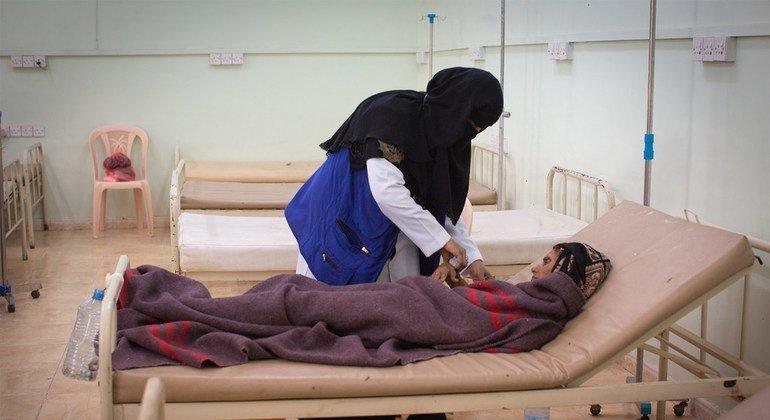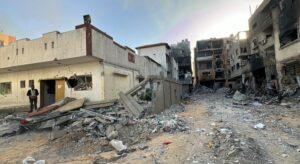The month of November saw a sharp increase in cholera cases and deaths compared to the same period in 2023, with suspected cases increasing by 37 percent and deaths by 27 percent.
Yemen’s cholera crisis adds to more than a decade of conflict, widespread economic collapse and crumbling health infrastructure. The country also experienced its largest cholera outbreak in recent history, from 2017 to 2020, and transmission has persisted since.
Unprecedented health crisis
“The epidemic of water-borne diseases such as cholera and acute watery diarrhea imposes a additional burden for a health system already strained and faced with multiple epidemics” said Arturo Pesigan, WHO representative in Yemen.
“WHO and humanitarian actors are strained in their efforts to meet growing needs due to severe funding shortages.»
Critical challenges, including inadequate access to clean water, poor sanitation and limited availability of treatments, are fueling the current outbreak, WHO said.
Severe funding shortages
Yemen’s cholera response faces a $20 million funding gap for the response period October 2024 to March 2025.
Lack of funds has already forced the closure of 47 diarrhea treatment centers (DTC) and 234 oral rehydration centers (ORC) between March and November.
An additional 17 DTCs and 39 ORCs are expected to close by the end of December, which could result in the closure of 84 percent of DTCs and 62 percent of ORCs across the country.
Without immediate financial support, health partners warn that Yemen could face another devastating scenario similar to the 2017-2020 outbreak, which overwhelmed its fragile health system.
According to the United Nations World Health Organization, Yemen has the highest cholera burden in the world.
Response Efforts
Since the last cholera outbreak emerged in March 2024, WHO has worked closely with Yemeni authorities, UN agencies and humanitarian partners to manage the outbreak.
Key efforts include deploying more than 25,000 rapid response team missions to investigate alerts and implement control measures. WHO also provided reagents and laboratory supplies to 12 central public health laboratories to confirm infections.
It also distributed essential medicines, medical supplies and water, sanitation and hygiene (WASH) materials to health facilities, and trained over 800 health workers in cholera case management and supported an oral vaccination campaign against cholera which affected 3.2 million people. people in six governorates.
Humanitarian challenges
The cholera crisis is just one facet of the broader humanitarian crisis facing Yemen.
The conflict has left 18.2 million people, almost half the population, in need of humanitarian assistance, of whom 11.2 million are expected to receive humanitarian assistance.
Nationwide, some 17.6 million people are affected by food insecurity, while almost half of children under the age of five suffer from moderate to severe stunting.




